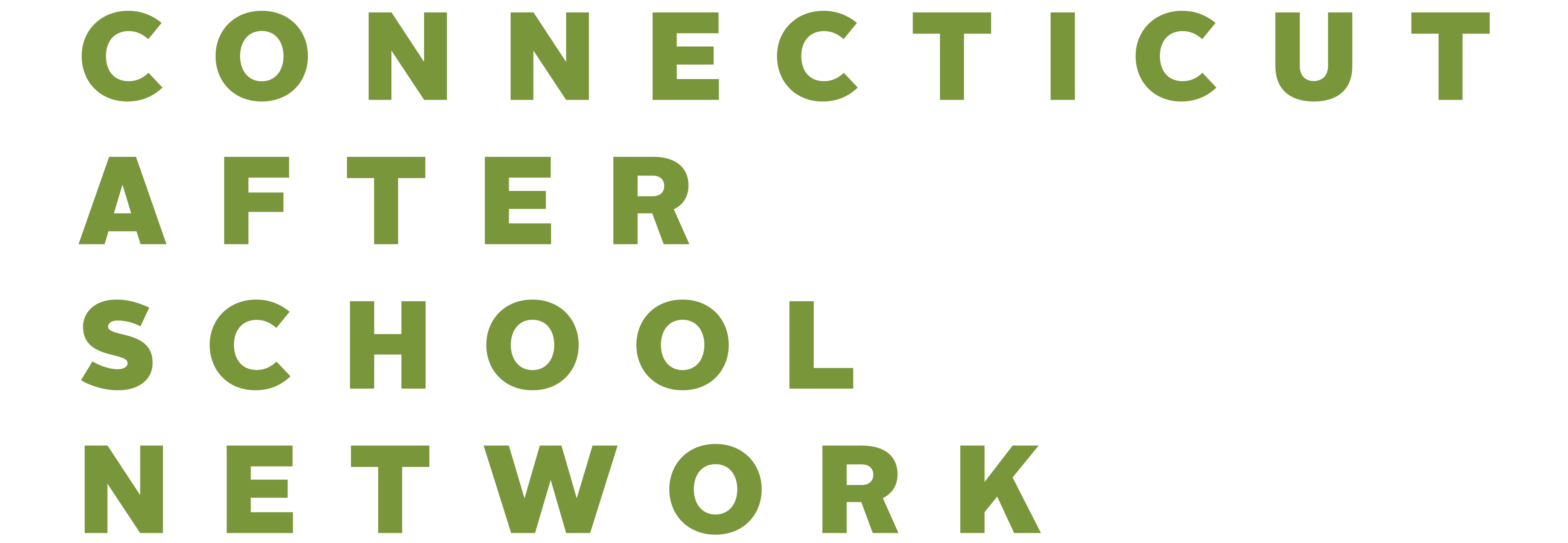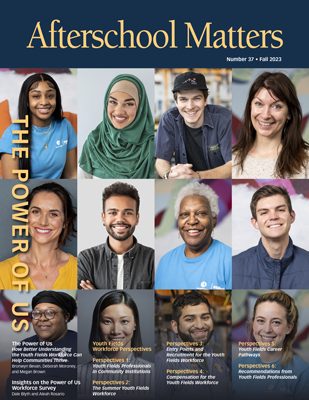The place of out-of-school time programming in supporting young people’s learning and growth is well established. Yet little is known about the staff and volunteers who support young people. In the latest issue of the Afterschool Matters Journal, these topics are unpacked not only through data, but practitioner stories.
What is the Youth Fields Workforce Study? It is a national effort to explore, define, and elevate the work of professionals and volunteers in an expansive range of youth-serving organizations. With support from The Wallace Foundation, the American Institutes for Research (AIR) led a constellation of partners, including the National Institute on Out-of-School Time (NIOST), in this study of the youth fields workforce.
A major part of the study is the Power of Us Workforce Survey. The survey learns about youth workers and their experiences in the field. The survey gathered data from thousands of youth field professionals across the country. In addition to soliciting detailed demographic information about respondents, the survey asked about their current role, type of organization, career trajectory, professional learning opportunities, experiences on the job, professional values, needs, professional certifications and associations.
A series of Perspectives, developed by NIOST researchers, supplements the data from the survey. Based on interviews with youth-serving professionals, the Perspectives highlight the broad range of voices in the youth fields workforce. Its goals are to: Deepen insight into the data from the Power of Us survey; Explore the nuances of youth professionals’ work experiences; Elevate practitioners’ voices, highlighting their experiences and challenges; Investigate similarities and differences in youth work in diverse employment sectors; and Raise awareness of this workforce and its value.
The Power of Us data illuminates varying perspectives as it captures the perspectives of youth field professionals on critical workforce issues. Each Perspective explores a single workforce issue or sector:
- Perspective 1: Community institutions
- Perspective 2: Summer
- Perspective 3: Entry points and recruitment
- Perspective 4: Compensation
- Perspective 5: Career pathways
- Perspective 6: Recommendations
In addition to highlighting the experiences and opinions of youth-serving professionals, each Perspective points to promising directions for future research, policy, and practice. Our hope is that the findings from our interviews, together with results from the Power of Us Workforce Survey, will inspire leaders and policymakers to better support this vital workforce in transforming the lives of young people.

